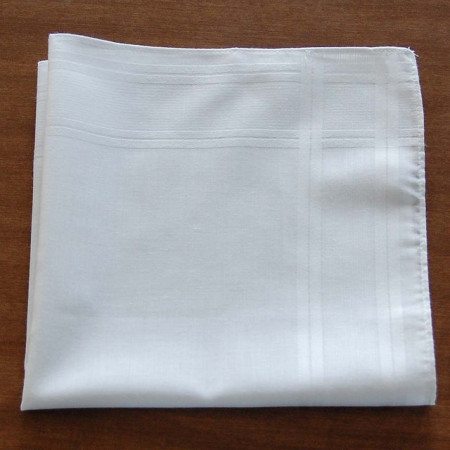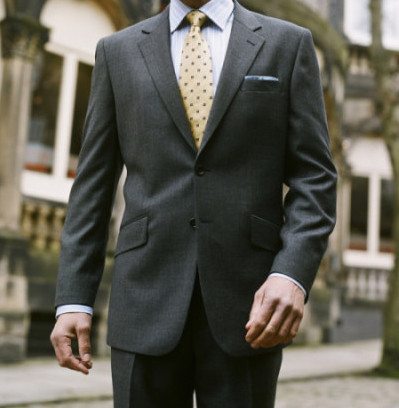The Medical Interview – How to Dress Sharp for Healthcare Professionals
We tend to think of hospitals as uniformed places — nurses in scrubs, doctors in coats, and so on.
But different institutions often use different dress codes, and can require varying levels of formality depending on the circumstances.
Even practicing surgeons rarely spend their whole day in sterile garb. “Office hours” have their requirements as well.
For the interviewing medical professional, this can be nerve-racking.
The medical industry is a wealthy and expensive one, and potential employees have to look like the absolute best possible investment their salary and benefits can buy.
With more doctors entering the workforce every year, there’s no excuse for coming to a medical job interview looking anything less than perfect.
The Importance of Interview Clothes in the Medical Field
Whether we like it or not, the hiring process is as much a purchasing decision as ordering a new MRI machine for the hospital.
Employers are looking for the best candidate their money can buy, and even a stellar résumé or transcript doesn’t complete that picture.
As superficial as it sounds, an attractively-dressed applicant looks like a better investment and has an immediate advantage over a similar person who is not as well presented.
A neat appearance suggests good attention to detail at the very least, and dressing up for an interview shows the employer that you understand the need to make an extra effort for special situations.
Even minor flaws in your outfit — a rumpled shirt, say, or scuffed shoes — screams of either inflexibility or outright cluelessness to a picky employer.
The best custom suit in the world will not, of course, get a job for a completely unqualified applicant. But turning out impeccably for an interview can make you stand out among equally-qualified applications as the candidate who understands the social necessities of the job as well as the medical skills — a rarer commodity on most hospital staffs than you might think.
And many potential employers are frankly just perplexed by poorly-dressed applicants, discarding them immediately. With educations in medicine routinely costing six figures, and salaries often commanding just as much, it’s hard to take someone in a badly-fitted, off-the-rack suit and beat-up shoes very seriously.
Hospital Dress Codes: Knowing the Clothing
Most medical institutions have their own dress code, which you will want to significantly exceed for your interview.
Even if the interviewer tells you that a particular level of dress is appropriate, you may want to consider go slightly beyond that instruction.
A “let’s keep it casual” invitation should still be met with dress trousers, a collared shirt and tie, and a good jacket. Anything else is almost certainly suit and tie territory.
If you don’t happen to have access to a hospital’s dress code (they’re often on internal, employee-only systems), consider paying an informal visit to the grounds on your own time.
Sneak a peek at what the people in your position are wearing.
Somewhere with a wide variety of outfits, styles, and colors may be inclined toward an interviewer with a more aggressively modern presentation, while a hospital whose employees tend toward an unvarying dress code will clearly expect the most conservative, formal appearance you can muster.
You shouldn’t plan on looking like the hospital staff at your interview — you want to well exceed that level of dress — but you can form a good idea of how much individuality the administration prefers to see.
The Interview Suit for Medical Professionals
We use the phrase “interview suit” because it’s rarely appropriate for a male applicant in the medical field to wear anything but a full, matched suit.
Unless the interviewer very specifically instructs you to wear something else, the suit and tie is going to be the minimum expectation; wearing anything less is asking to be forgotten or even immediately discarded.
Interviews are enough of a high-stakes venture that we recommend a conservative approach, particularly if your budget only allows for one interview-and-work suit.
The basic single-breasted, two-button jacket with matching trousers is your safest and most multi-purpose garment, particularly in a dark gray or blue with minimal or no patterning. A white shirt and a sober tie make these suits appropriate for all levels of business wear, and therefore for an interview as well.
Keep the fit and presentation of your suit in mind as well as its basic cut and color. The shoulders of the jacket should end where your natural shoulders do, not hang off them, and the cuffs should stop high enough on the wrist to expose a half-inch or so of shirt cuff.
The trousers should be pressed, with a crisp crease and nothing large enough in the pockets to make an unsightly bulge. Freshly-shined black shoes are a must, with a matching belt unless you wear suspenders.
Dressing Up the Medical Interview Suit

A good suit in a clean fit already gives you a leg up on your competition. Completing the look — adding the details — goes one step further and tells the viewer that you’re all about exceeding standards, rather than meeting them.
It’s hard to make a much better impression no matter what job you’re seeking. Look to impress with the touches that others tend to forget:
- Alterations. If you’re not fortunate enough to own a custom-tailored suit of your own — and many starting medical professionals simply can’t afford to — a few alterations can make an off-the-rack suit fit nearly as well at a fraction of the cost.
- Keeping the shoulders of the jacket and the crotch of the jean well-fitted, without excess sagging, will make your suit look infinitely better than a looser, store-bought fit.
- Pocket squares. A crisp, white square in your left breast pocket marks you as a man who thinks about his appearance, rather than a man who happens to own a good suit and hasn’t done anything to screw it up yet. In day-to-day wear a pocket square can be an expressive part of your ensemble, but for interviews we recommend sticking to a simple peak or horizontal fold in plain white.
- A wristwatch keeps you from fumbling in your pocket for a phone when you want to check the time and marks you as someone who likes to be prepared. It also suggests that you care about punctuality, which is a great impression to make on a prospective employer.
- A good-quality pen in your interior jacket pocket serves a similar function to a watch. It indicates that you think ahead and plan to be self-sufficient, rather than having to rely on other people’s help. It’s rare for an interview to pass without needing to sign or fill out something, so be prepared to make a good impression when it happens.
Medical Interview Dress Code – Conclusion
Like your outfit overall, none of the individual details are going to make or break an interview. What they can do is distinguish you as someone who thinks ahead, makes the extra effort in special circumstances, and understands the social expectations of the position as well as the medical knowledge needed.
With the medical profession so competitive and the opportunities a well put-together interview suit gives you, there’s no reason to appear anything less than your absolute best.
or
Click here to see pictures of our Custom Bespoke Men’s Suits


